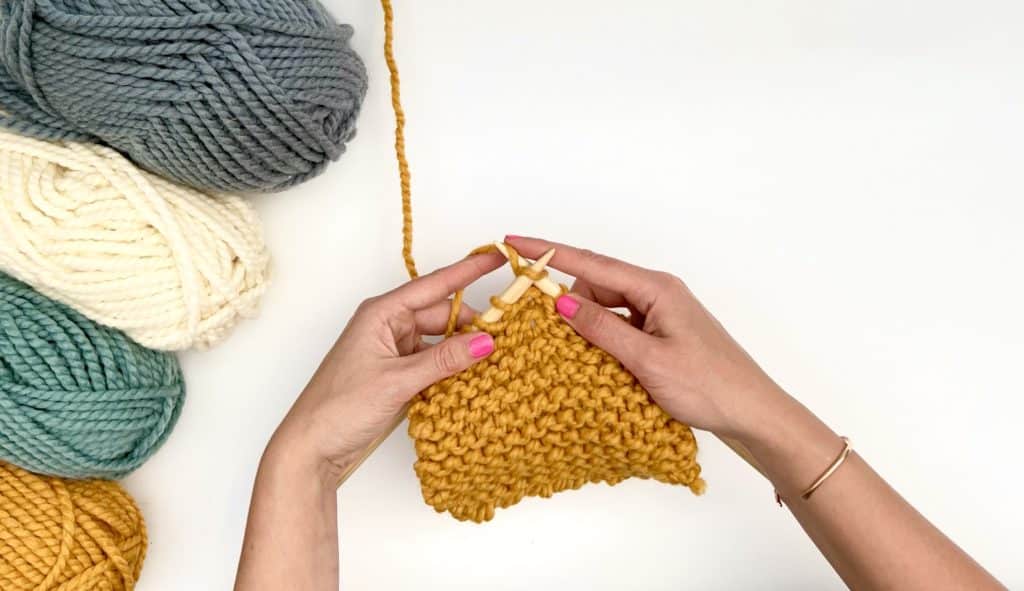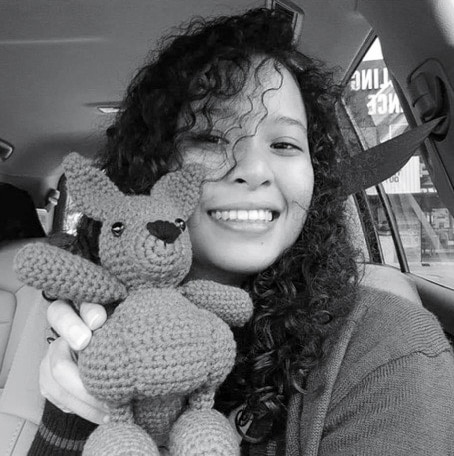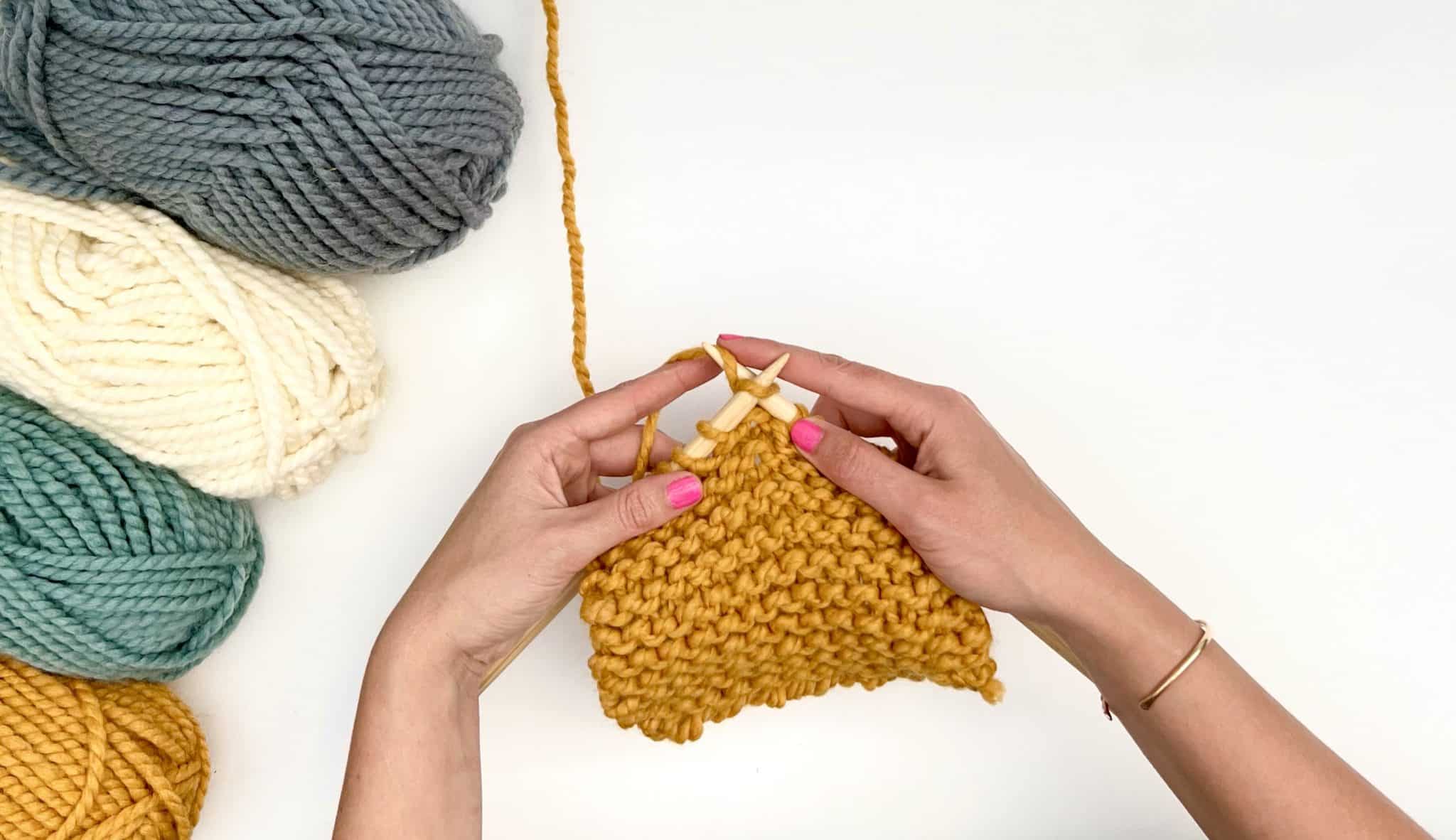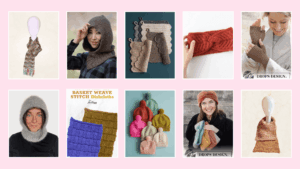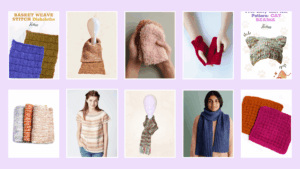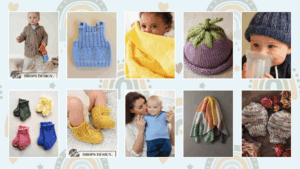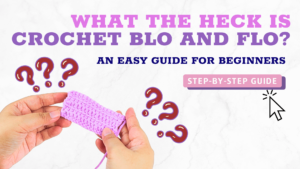Let's get right to it—no one wants to play yarn chicken, it's the absolute worst. If you're wondering how much yarn you'll need for a scarf, a solid starting point is 300 grams (or 2-3 skeins) of worsted weight yarn. This gives you a great baseline to start your project with confidence.
Your Quick Guide to Scarf Yarn Amounts
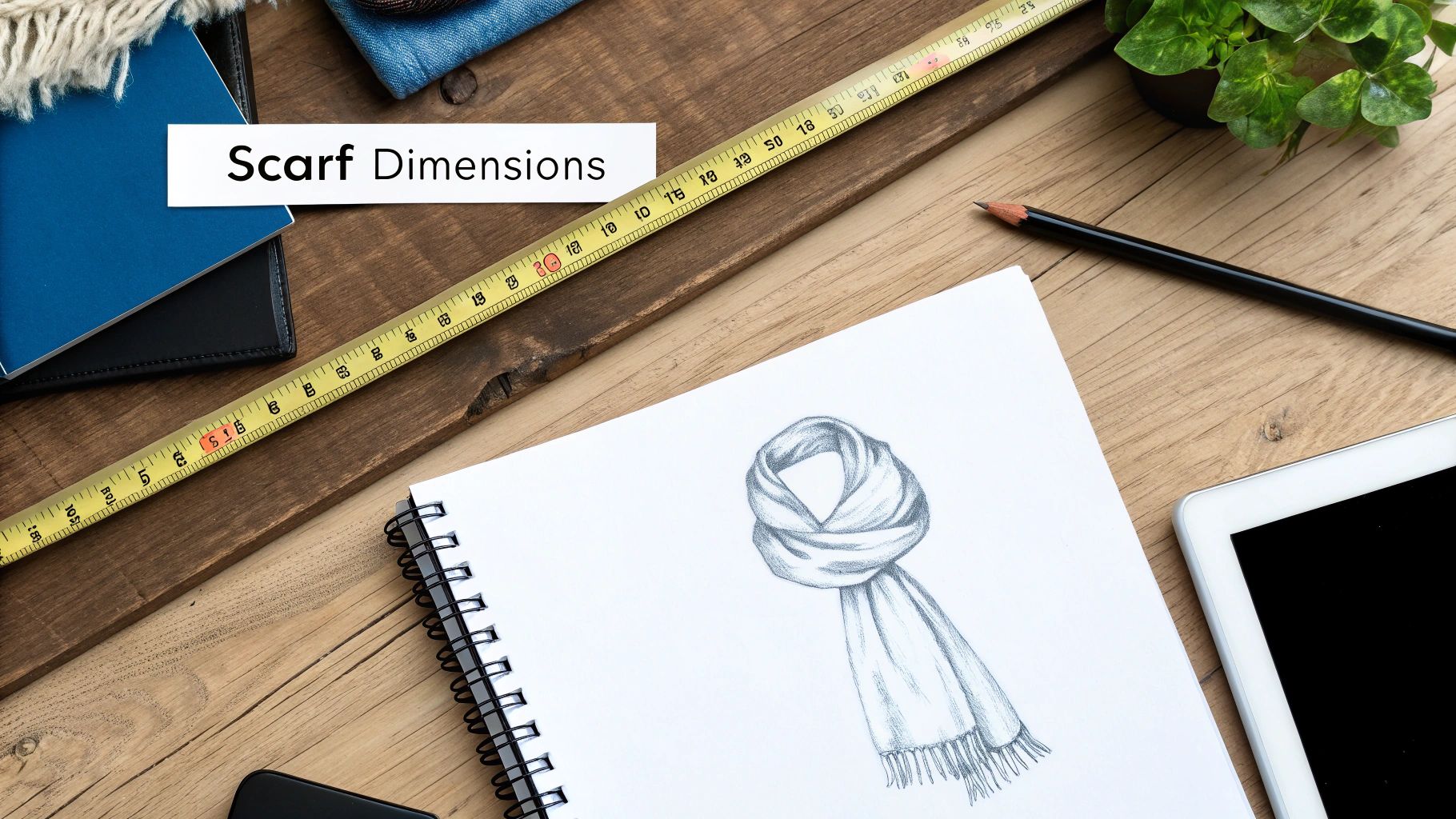
Figuring out the right amount of yarn can feel like a guessing game, but it doesn't have to be. Getting it right from the start saves you that last-minute panic when you realize you're just a few rows short. Plus, buying enough from the same dye lot is key for a consistent, beautiful color from end to end.
Think of this as your go-to cheat sheet for a quick idea at a glance. I’ve put together a simple table with common scarf sizes and their estimated yarn needs. It’s the perfect baseline before we dig into the details that can change your total.
Quick Yarn Estimates for Common Scarf Sizes
This little table gives you a quick reference for how much yarn you'll likely need for different scarf styles. Keep in mind, these are based on a standard worsted weight yarn, a super common choice for scarves.
| Scarf Type | Typical Dimensions | Estimated Yarn (grams) |
|---|---|---|
| Short Neckerchief | 4" x 45" (10cm x 114cm) | 100-150g |
| Standard Scarf | 7" x 60" (18cm x 152cm) | 250-300g |
| Long & Wide Wrap | 10" x 72" (25cm x 183cm) | 350-450g |
These estimates are great for planning, but remember other things play a big role. A lacy, open stitch will sip yarn, while a dense, chunky cable stitch will chug it. For a more detailed breakdown, this handy guide to calculating yarn needs is a fantastic resource.
Pro Tip: When in doubt, always buy an extra skein if you can. Leftover yarn is perfect for making matching tassels, a small headband, or for mending your scarf down the road.
How Yarn Weight Changes Everything
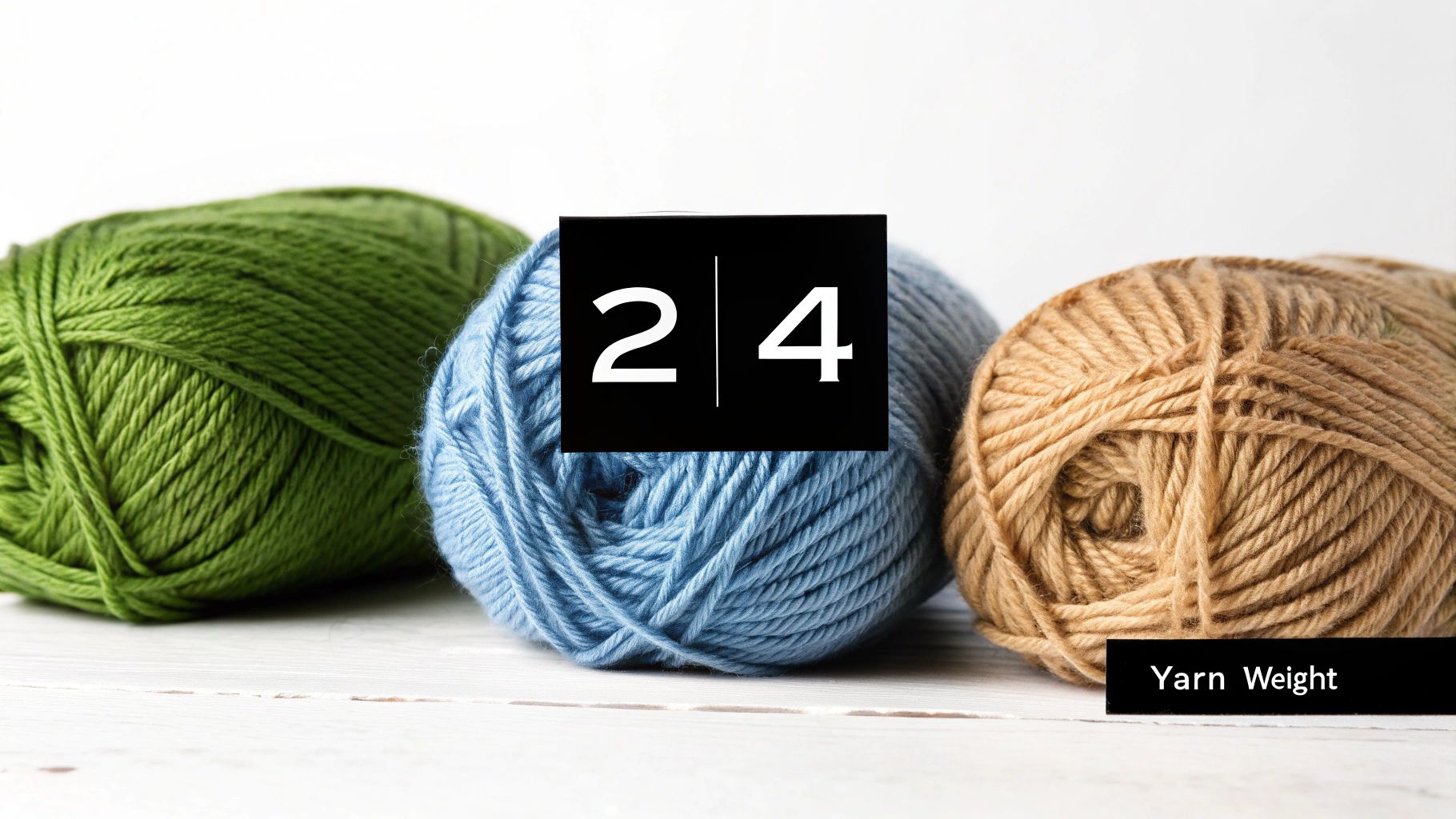
Alright, you've got a general idea of your scarf's size. Now for the real game-changer: yarn weight. This is probably the biggest factor that will determine how much yarn you actually need for your scarf.
The thickness of your yarn—from an airy laceweight to a super cozy bulky—has a massive impact on the final yardage. Think of it this way: a chunky yarn is like building with big Lego bricks, while a delicate yarn is like using the tiny ones. You’ll need a lot more of the tiny ones to build the same size scarf.
From Airy to Bulky: How Weight Affects Your Project
This isn't just about how much yarn you buy; it's about the entire vibe of your finished scarf. A heavier, super bulky yarn will create a thick, warm, and structured scarf. On the other hand, a lightweight yarn gives you a flowy accessory with tons of lovely movement.
Heads Up: Your yarn label is your BFF here. It tells you the weight (like worsted or DK), the yardage per skein, and the recommended needle size—all crucial clues for planning your project.
The yarn market is huge, and your options are endless. Coarse wools are thick but can be scratchy, while medium wools like Merino offer a fantastic balance of comfort and stretch. Then you have fine wools, which are all about next-level softness and luxury.
Matching Yarn Weight to Your Scarf Goals
So, what does this actually mean for you? It's all about matching the yarn to the scarf you're dreaming of.
- For a quick, super-cozy winter scarf: Grab a bulky or super bulky yarn. You'll need less yardage, and it'll fly off your needles.
- For a classic, everyday scarf: Worsted or DK weight yarns are your sweet spot. They give you a great mix of warmth and wearability.
- For a delicate, decorative wrap: A fingering or laceweight yarn will create a beautiful, airy fabric. Just be prepared to buy more yardage to get the length you want.
Understanding how yarn weight works is your secret weapon against that dreaded mid-project run to the yarn store. It empowers you to pick the perfect material to bring your creative vision to life.
The Impact of Scarf Size and Stitch Choice
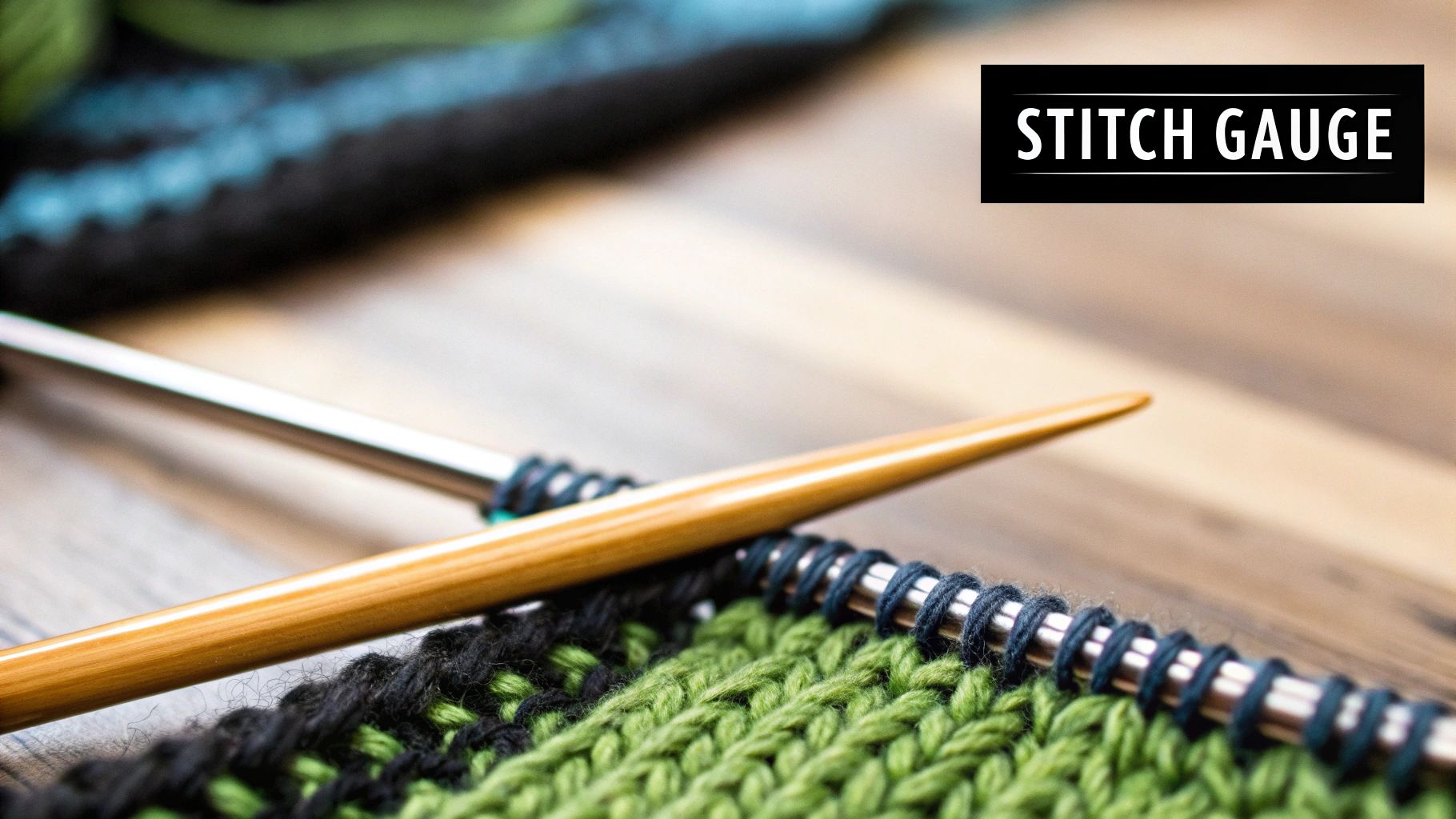
Okay, so you've nailed down your yarn weight, awesome. The next big question is: how epic do you want this scarf to be? Are we talking a chic little neckerchief, or a massive wrap you can hibernate in all winter?
It sounds obvious, but the final dimensions are the single biggest factor in how much yarn you’ll need. Adding just a few inches in width or length can be the difference between finishing strong and playing yarn chicken. Deciding on the size before you buy your yarn is a total pro move.
How Stitches Can Be Yarn Eaters
Here's a fun fact: not all stitches are created equal. Some are incredibly efficient with yarn, while others are absolute gluttons. It’s like packing a suitcase—some stitches fold up neatly, while others are bulky and take up way more space.
A simple garter stitch or stockinette stitch creates a flat, efficient fabric that sips yarn. But if you’re planning something with complex textures or cables, those can increase your yarn needs by 25% or more.
If your heart is set on a pattern with a ton of texture, you'll definitely need to factor that into your yarn budget.
Here’s a quick rundown of what I mean:
-
Efficient Stitches (The Yarn Sippers):
- Garter Stitch: This is as straightforward as it gets, creating a wonderfully squishy, reversible fabric without demanding a ton of yarn.
- Stockinette Stitch: The classic knit-one-row, purl-the-next stitch is another super-efficient choice for a smooth, flat fabric.
-
Thirsty Stitches (The Yarn Guzzlers):
- Ribbing: That stretchy, scrunchy quality is fantastic, but it pulls the fabric in, meaning it uses more yarn than a flat stitch.
- Seed or Moss Stitch: I love the beautiful, bumpy texture, but it makes the fabric much denser and, you guessed it, thirstier for yarn.
- Cables: This is the big one; all those gorgeous twists are literally eating up extra yarn. For a heavily cabled scarf, like the beautiful Melisma Scarf pattern, my rule is to always buy an extra skein.
Nailing Your Estimate with a Gauge Swatch
Ready to get precise? The gauge swatch is your best friend for figuring out exactly how much yarn you’ll need. I promise it’s not as scary as it sounds. Think of it as a tiny practice scarf that gives you a sneak peek into your finished project.
This small test square is crucial because it tells you exactly how you knit with a specific yarn and needle combo. Everyone’s knitting tension is a little different, and a swatch is the only way to get a truly personal measurement. It’s a tiny bit of upfront effort that saves a world of yarn-related stress later on.
Your gauge swatch is the most reliable way to buy with confidence and finally end the dreaded mid-project yarn panic. It's the ultimate 'measure twice, cut once' for knitters.
From Swatch to Scarf Calculation
Once you've made your little square, the math is surprisingly simple. You'll just measure how many stitches fit into one inch, and that number is your key. From there, you can accurately calculate how much yarn your dream scarf will actually gobble up.
This infographic breaks down the simple flow from measuring your swatch to calculating your final yarn needs.
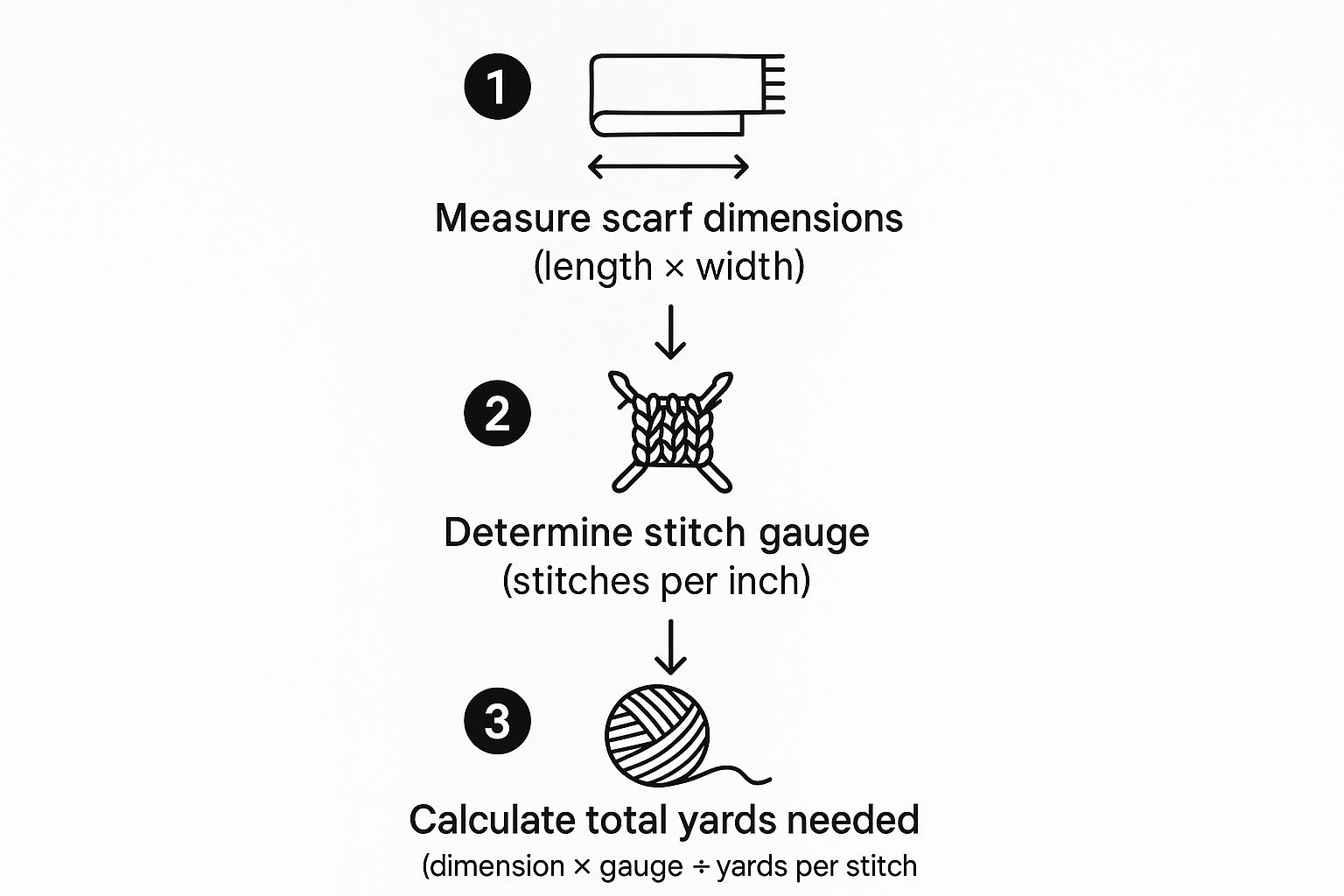
Seeing the steps visually really helps connect the dots. Your personal stitch gauge directly translates into the total yarn required for your scarf's specific dimensions.
Now, let's say you've got your swatch done and you're ready for the real deal. Your swatch gives you great info on your knit stitches, but what about the purl stitch? You can find a great visual reference in this detailed look at the purl stitch.
Working With Luxury Fibers Like Silk and Cashmere
Sometimes you just want to knit a scarf that feels extra special. This is where luxury fibers like silk, cashmere, and alpaca come in, elevating your project from simply cozy to absolutely divine. These premium yarns bring incredible softness and a beautiful sheen, but they can also change how you approach your project.
Silk yarns, for example, are famous for their amazing drape and lightweight feel. A scarf made from 100% silk will hang very differently and might even need more yardage to get the same coverage as a wool scarf. That's because silk fibers are less elastic and "fluffy" than wool, creating a thinner, more fluid fabric.
Planning for Premium Yarns
When you're investing in a luxury fiber, a little extra planning goes a long way. These yarns aren't just a treat to work with; they're a significant part of the textile industry's timeless appeal. Their softness and sheen make them a consistent favorite with crafters everywhere.
These special materials also deserve thoughtful care, both while you're knitting and after your project is finished. Properly storing your scarf and any leftover yarn will protect your investment. For some great visuals on keeping your stash safe, you can see our guide on how to store yarn.
A Little Tip: Luxury fibers can be slippery! Silk and some alpaca blends tend to slide right off your needles. Using bamboo or wooden needles gives you a much better grip, helping you keep your stitches even and your tension just right.
Each fiber, from silky smooth to fluffy wool, has its own unique personality. Choosing the right one is the key to making sure your scarf turns out exactly as you envisioned it. It'll become a cherished accessory for years to come.
Yarn Questions Answered
Still have a few questions? It happens to all of us. Let's tackle some of the most common things people ask when figuring out yarn for a scarf.
Is It Better to Buy Extra Yarn Just in Case?
Yes, absolutely! Think of it as your project insurance policy. I always recommend grabbing an extra skein, especially if your yarn is hand-dyed or comes from a specific dye lot.
Dye lots can have tiny but noticeable color variations between batches. Buying all your yarn at once guarantees your scarf has a consistent, even color. Besides, leftovers are amazing for adding fringe or knitting a matching headband later on!
How Much Yarn Do I Need for a Child's Scarf?
For a kid-sized scarf, you can definitely scale back. A good starting point is about half the amount you'd use for a grown-up, so around 100-150 grams of worsted weight yarn should do the trick. Of course, this can shift a bit depending on the child's age and how long you want the scarf to be.
My Quick Tip: When you're knitting for kids, always think about the yarn's fiber. A soft, machine-washable merino wool or a cotton blend is usually a great choice. You want something that’s gentle on their skin and easy for parents to clean.
Do Crochet and Knitting Use the Same Amount of Yarn?
That's a fantastic question, and the answer is almost always no. Crochet stitches are built differently—they're generally thicker and create a much denser fabric than knitting stitches do.
Because of this, crochet tends to be a bit of a yarn hog. A good rule of thumb is to have about 25-30% more yarn on hand if you're planning to crochet a scarf instead of knitting it. For more visual aids and beginner guides, you can always check out resources like this simple guide to knitting a scarf.
What If My Yarn Label Is Missing?
Don't panic! We've all been there with a mystery skein from our stash. You can figure out its weight pretty easily using a "wraps per inch" (or WPI) measurement.
Just wrap the yarn neatly around a ruler, making sure the strands lie side-by-side but aren't squished. Then, count how many wraps fit snugly into one inch. You can compare that number to a standard WPI chart online to find your yarn's weight.
Ready to find the perfect yarn for your next scarf project? Knitting.com has a huge library of free patterns, beginner-friendly tutorials, and expert tips to help you cast on with confidence.
Explore our resources and start your creative journey today at https://knitting.com.
